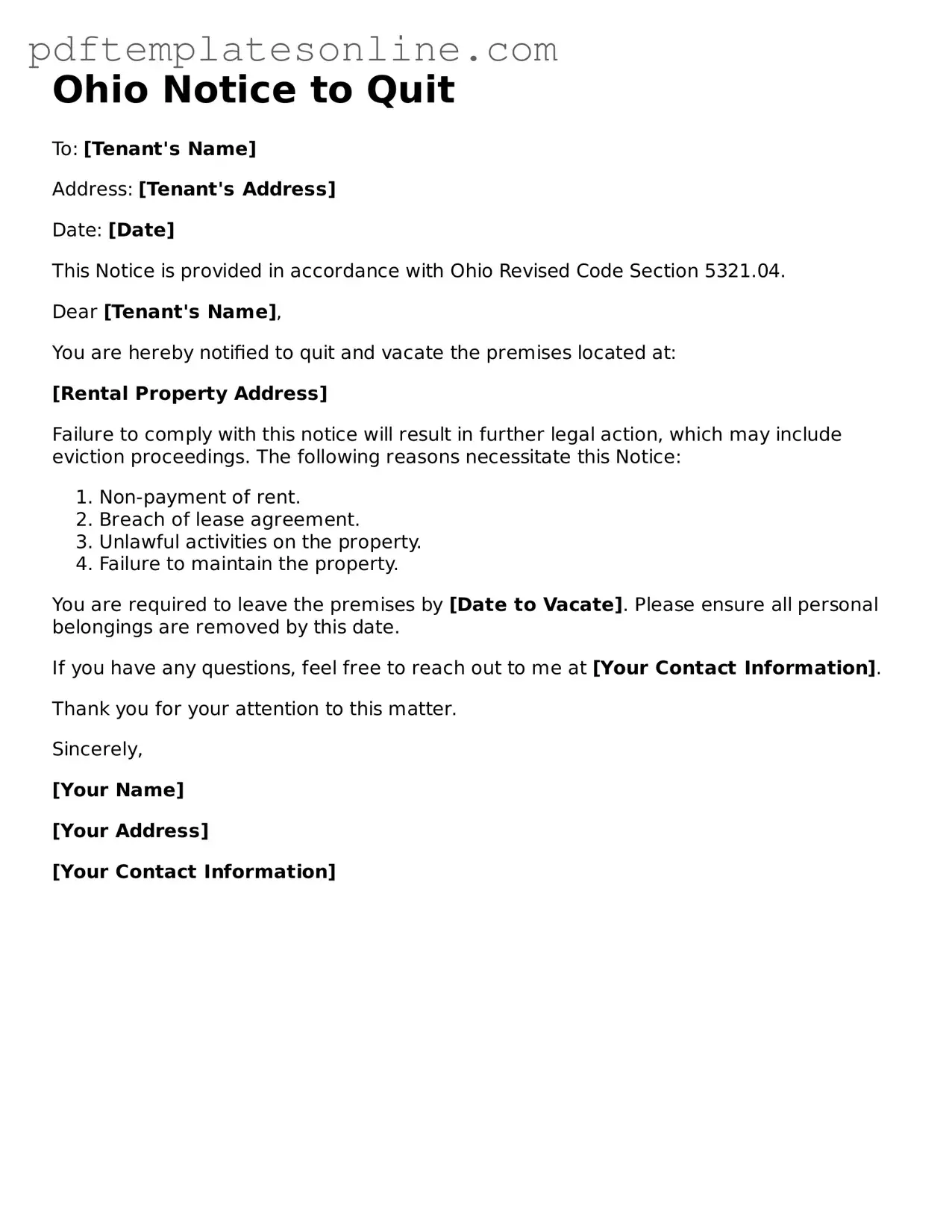Filling out the Ohio Notice to Quit form can be a straightforward process, but mistakes are common and can lead to complications. One frequent error is failing to provide the correct address of the rental property. This address must be precise, as it identifies the location in question. Without this information, the notice may be deemed invalid, leaving the landlord unable to proceed with eviction.
Another mistake often made is neglecting to include the tenant's name as it appears on the lease. The form should clearly state the full legal name of the tenant. If the name is misspelled or incorrect, it can cause delays or even invalidate the notice. It is crucial to double-check this detail to ensure accuracy.
Many people also overlook the importance of specifying the reason for the eviction. The Notice to Quit must state the grounds for termination, whether it’s non-payment of rent or a lease violation. Omitting this information can lead to confusion and may hinder the landlord's ability to take further legal action.
Additionally, some individuals fail to indicate the date by which the tenant must vacate the premises. This date should align with Ohio law, which typically requires a certain notice period depending on the reason for eviction. Not providing a clear deadline can create ambiguity, making it harder to enforce the notice.
Improperly signing the form is another common mistake. The landlord must sign the Notice to Quit to validate it. If the form is unsigned or signed by someone who is not authorized, it may not hold up in court. Ensuring that the appropriate party signs the document is essential for its legality.
People sometimes forget to deliver the Notice to Quit properly. It’s important to follow the legal requirements for serving the notice to the tenant. This can include personal delivery or mailing the notice. Failing to do so may result in the notice being considered invalid, which can prolong the eviction process.
Lastly, many individuals do not keep a copy of the Notice to Quit for their records. Having a copy is important for future reference, especially if the situation escalates to legal proceedings. Keeping thorough records helps landlords demonstrate their compliance with the law and can be invaluable in court.
